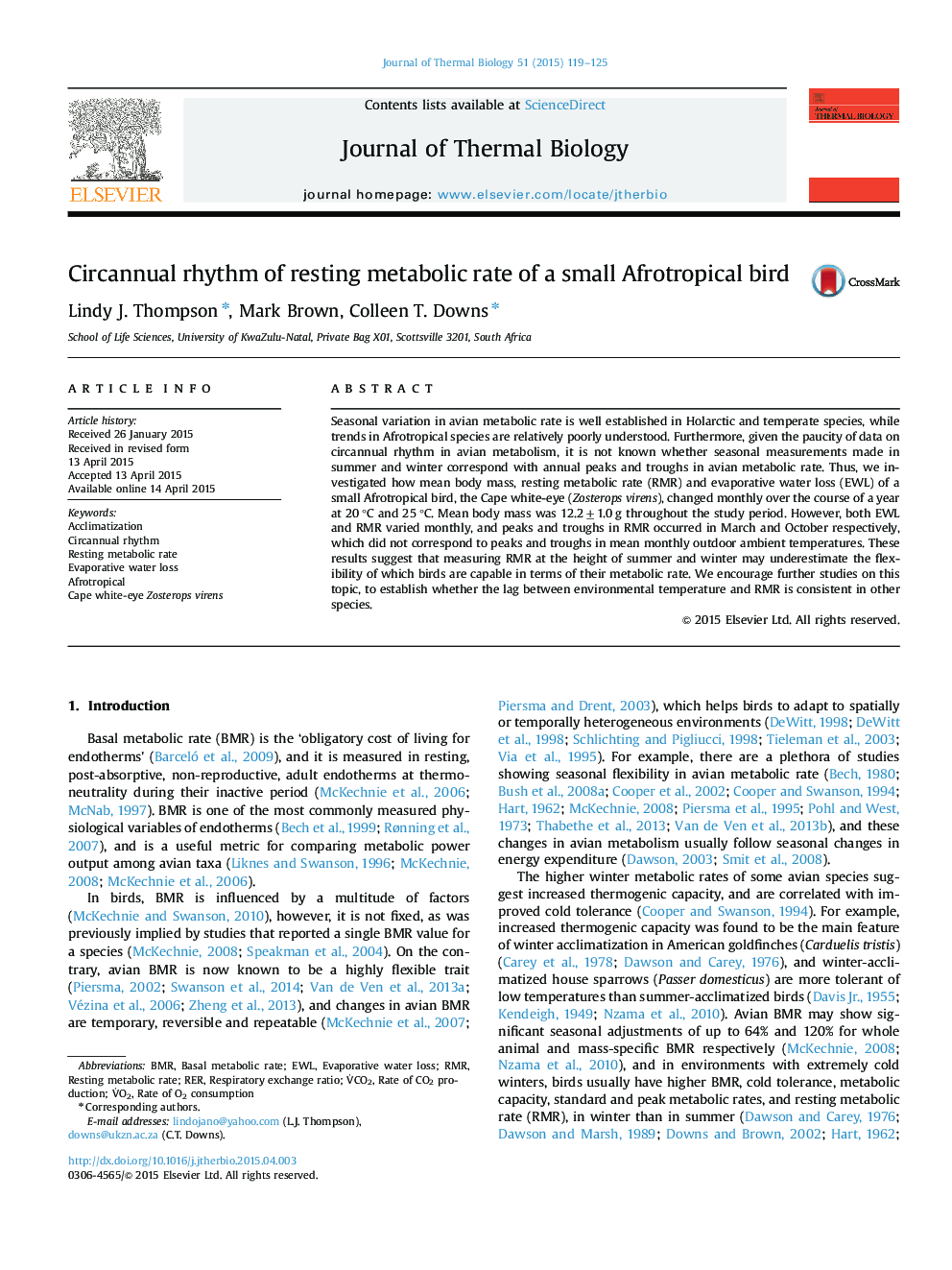| Article ID | Journal | Published Year | Pages | File Type |
|---|---|---|---|---|
| 2842811 | Journal of Thermal Biology | 2015 | 7 Pages |
•Seasonal variation in avian metabolic rate is poorly understood.•There is a paucity of data on circannual rhythm in avian metabolism.•Monthly metabolism of the Cape white-eye was investigated for a year.•Mean body mass was 12.2±1.0 g throughout the year.•Peaks and troughs in RMR did not coincide with peaks and troughs in ambient temperature.
Seasonal variation in avian metabolic rate is well established in Holarctic and temperate species, while trends in Afrotropical species are relatively poorly understood. Furthermore, given the paucity of data on circannual rhythm in avian metabolism, it is not known whether seasonal measurements made in summer and winter correspond with annual peaks and troughs in avian metabolic rate. Thus, we investigated how mean body mass, resting metabolic rate (RMR) and evaporative water loss (EWL) of a small Afrotropical bird, the Cape white-eye (Zosterops virens), changed monthly over the course of a year at 20 °C and 25 °C. Mean body mass was 12.2±1.0 g throughout the study period. However, both EWL and RMR varied monthly, and peaks and troughs in RMR occurred in March and October respectively, which did not correspond to peaks and troughs in mean monthly outdoor ambient temperatures. These results suggest that measuring RMR at the height of summer and winter may underestimate the flexibility of which birds are capable in terms of their metabolic rate. We encourage further studies on this topic, to establish whether the lag between environmental temperature and RMR is consistent in other species.
